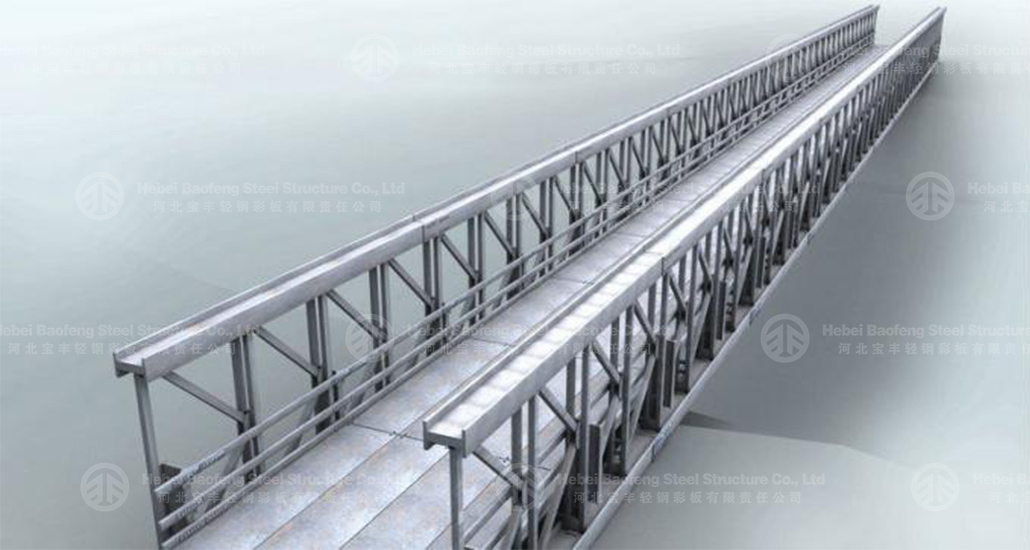
How To Build A Bailey Bridge?
Building a Bailey Bridge involves a systematic approach to ensure structural integrity and efficiency. Here's a concise, organized guide:
1. Planning & Design
Span Length: Determine the required span (typically 10–60 meters) based on site needs.
Load Capacity: Calculate expected loads (e.g., military vehicles, civilian traffic) to size the bridge appropriately.
Site Survey: Assess terrain, water flow, and soil stability. Plan abutments, piers, and approaches.
Components: Use standardized Bailey bridge parts (panels, transoms, stringers, deck planks) for modularity.
2. Materials & Tools
Prefabricated Components: Steel truss panels, transoms (horizontal beams), stringers (longitudinal beams), and deck planks.
Hardware: Bolts, pins, turnbuckles, and wire rope for connections.
Tools: Cranes, rollers, jacks, drills, and safety gear. Manual labor is feasible due to modular design.
3. Site Preparation
Foundations:
Build abutments (concrete or timber) at both ends.
Erect intermediate piers if needed, ensuring stability in water/soft soil using cofferdams or sheet piles.
Approach Spans: Construct ramps or temporary structures to align the bridge with the roadbed.
4. Assembly
Truss Construction:
Assemble vertical panels into A-frame trusses using pins/bolts. Panels are stacked for longer spans.
Connect trusses with transoms (horizontal beams) spaced at 1–3 meters.
Stringers & Deck:
Lay stringers across transoms to support the deck.
Install deck planks (15–30 cm wide) laterally, secured with wire rope or bolts.
Cross-Bracing: Add diagonal braces for lateral stability.
5. Erection
Rolling Method: Use rollers and jacks to position trusses. Lower into place using winches or cranes.
Anchoring: Secure abutments with anchor bolts or cables to resist movement.
6. Finishing
Deck Surfacing: Add gravel, asphalt, or wooden decking for traction and durability.
Railings: Install guardrails for safety (optional but recommended).
Inspection: Check all connections, load distribution, and stability before use.
7. Maintenance
Regularly inspect for corrosion, loose bolts, or structural damage. Lubricate joints as needed.
Key Considerations
Modularity: Allows rapid assembly/dismantling without heavy machinery.
Adaptability: Configurable as a through arch, deck bridge, or floating variant.
Safety: Ensure proper load limits, stable foundations, and secure connections.
This method enables quick deployment for military, emergency, or temporary crossings, leveraging simplicity and standardization for efficiency.

Catégories
dernier blog
Mots clés
© droits dauteur: 2025 Hebei Baofeng Steel Structure CO.,LTD Tous les droits sont réservés.

IPv6 réseau pris en charge